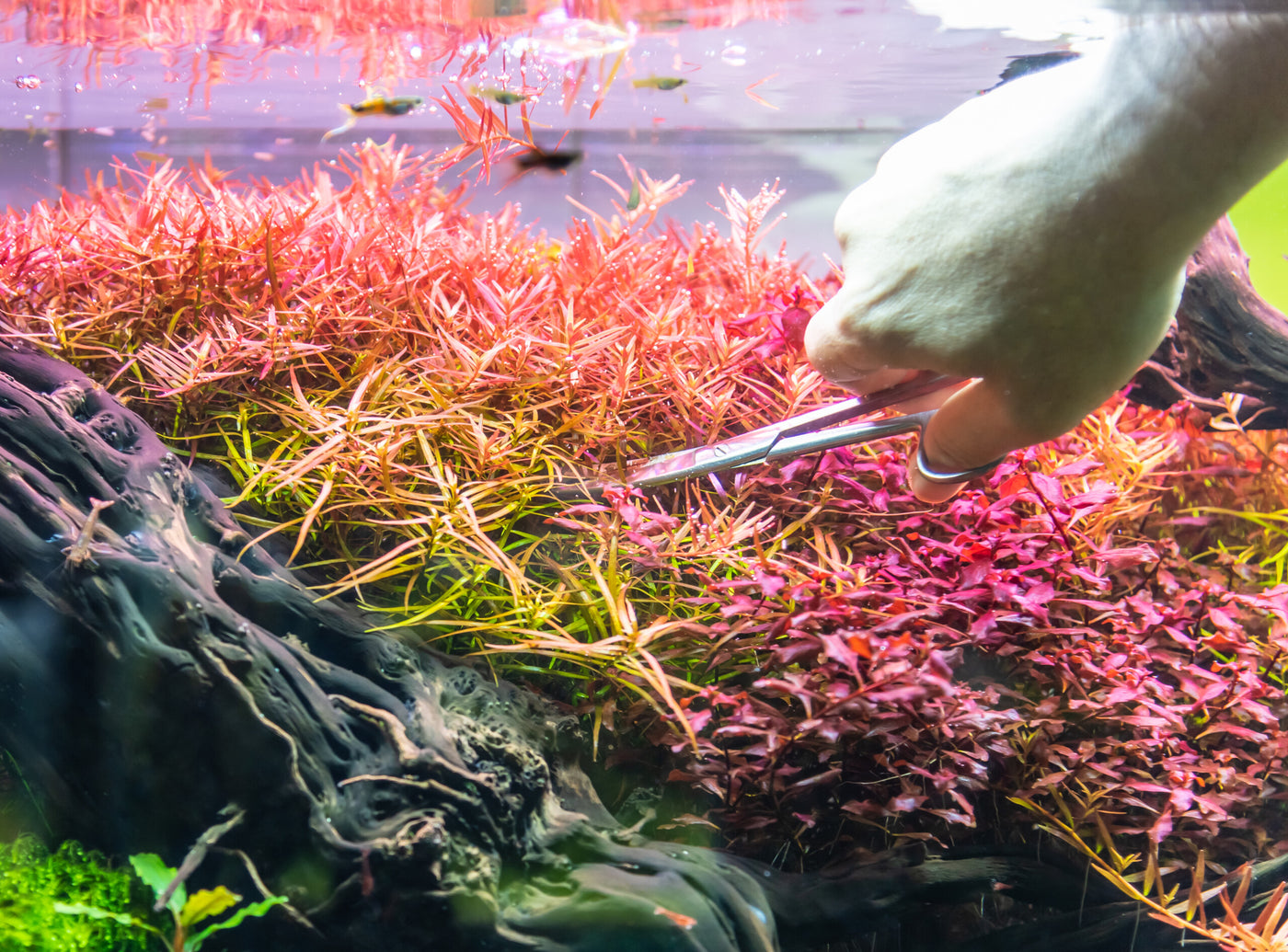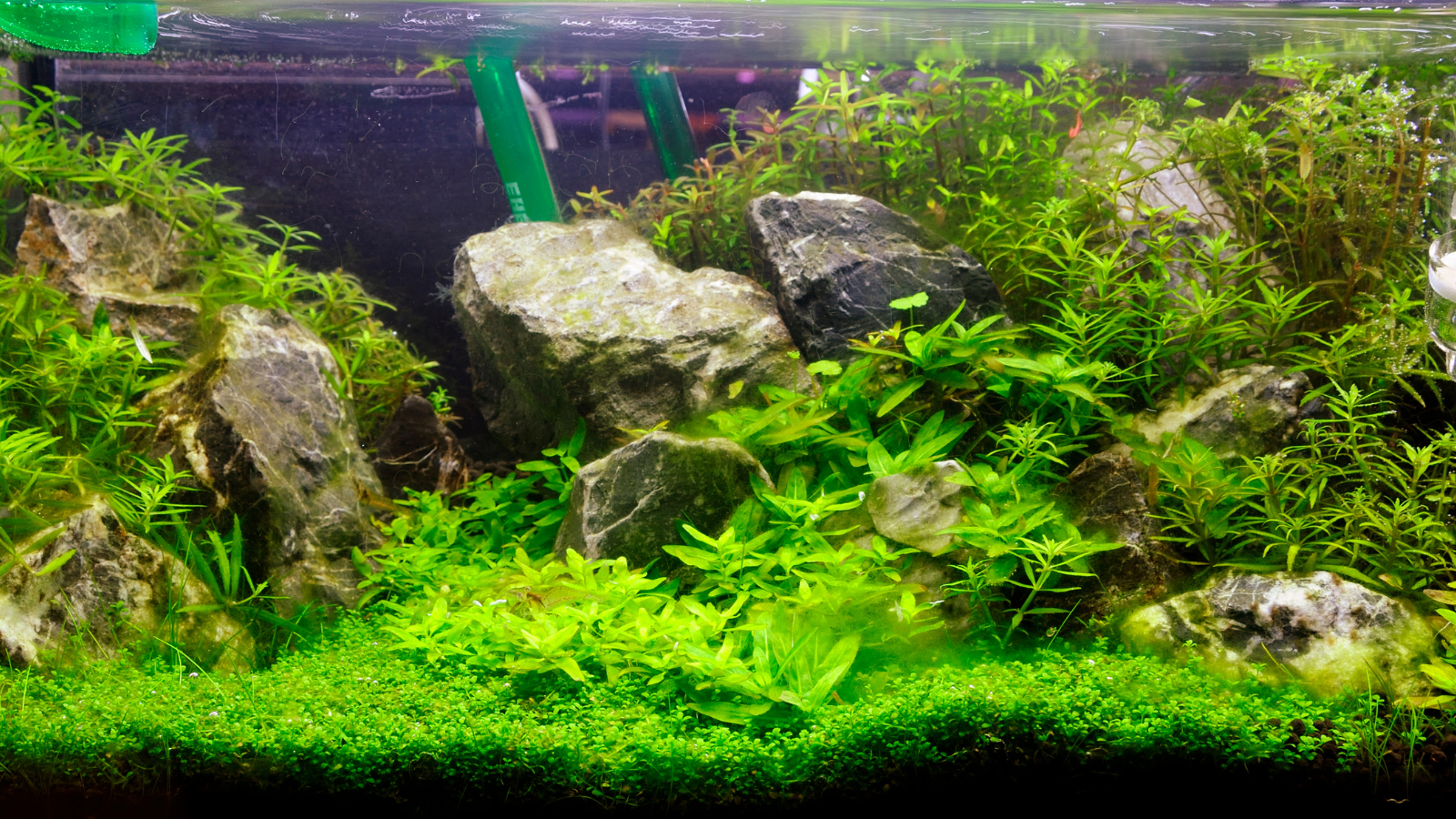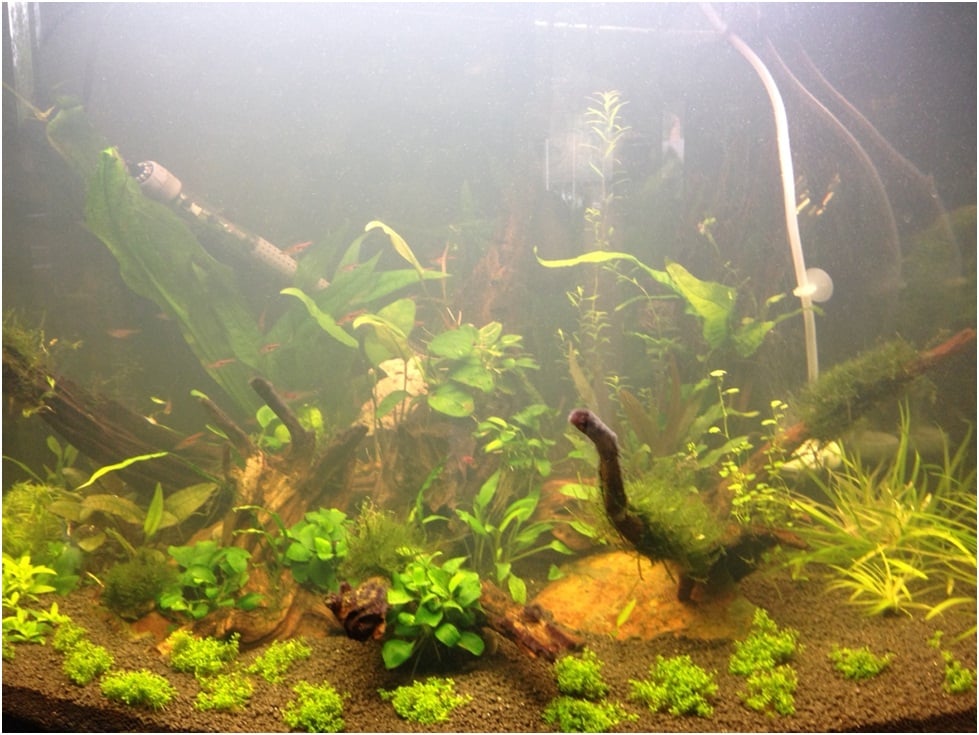
Trimming aquarium plants is the basic care procedure. The trimmed plants at the right moment of growth will repay us with an exemplary condition. If not cut or too rarely tended, they will rot in the lower parts and, as a result, we will lose our valuable species. Thanks to the appropriate trimming, we can form plants into various shapes. We can cut leaves that are damaged or show some defects.
Every amateur aquarist who likes to grow plants in his aquarium goes through several stages in his aquarium career. At the beginning, we do our best to make anything grow, but due to the lack of fundamental knowledge, our plants end in the toilet, and the putrefactive processes turn out to be an insurmountable barrier. We do not give up, we go further and start searching the depths of the Internet, looking for an answer to the question - what did we do wrong? Finally WE HAVE IT! - of course we only think so. We already know something about potassium and other macronutrients as well as iron and other micronutrients. Plants grow, indescribable joy overwhelms us. The faster they grow, the better... At this stage we still think so- plants right next to the surface, sometimes over it. Such an idyll, however, does not last too long, due to the lack of light in the lower parts, the plant begins to rot, older leaves fall off, everything ends up in the filter, which cannot cope with it anymore. Again, almost all of the flora lands on the composter and our aquarium has returned to its starting point. And this could have been avoided by trimming the plant at the right time. Deciding to trim at the right time is a matter of experience, which you will definitely gain over time.
Equipment
It is worth equipping yourself with scissors intended for aquarium purposes. In stores, we can meet, among other scissors: straight, wavy and curved. The first of them are the most universal. They are suitable for virtually any trimming method, although in some cases it will not be convenient (trimming lawn plants). The wavy scissors are mainly recommended for trimming lawn plants. Their shape allows for convenient trimming of low plants, even in hard-to-reach places. However, the curved ones are also universal, they are most often used for trimming stem plants or for cutting runners.
Depending on the plant, the trimming scheme is different. Below we present the basic information and methods of trimming aquatic plants will be described.
Lawn plants
Trim lawn plants (eg Hemianthus callitrichoides, Eleocharis parvula, Glossostigma elatinoides) when their height exceeds approx. 2 cm. Trimming causes the plants to grow densely and compact (the lawn becomes denser). As long as Eleocharis forgives us for irregular, rare cuts, Hemianthus approaches this subject ruthlessly. Uncut and oversized after a few weeks, it will start to detach from the ground. When putrefactive processes go too deep, it is required to replant fresh and healthy seedlings.
Stem plants
Trim the stem plants (e.g. Rotala, Bacopa, Cabomba, Hygrophila) in the sections between the nodes. The cut off upper part of the stem can be planted in the substrate - it will continue to grow. Trimming the stem plants causes the plant to grow sideways (new shoots will grow at the intersection), so the plant denses. When trimming stem plants, we do it in such a way as to give them the desired shape. Small-leaved stem plants such as Rotala can be cut literally like a hedge; new, even more beautiful shoots will grow from the trimmed stem in a few days. Plants like Hygrophila have larger leaves and we need to cut them with more sensitivity. A large leaf cut in half does not look very attractive and will rot and fall off when left in this form.
Rosette plants (e.g. Cryptocoryne, Echinodorus)
Trim old leaves and / or leaves with any defects (holes, yellow discoloration and other signs of deficiency). The cut location should be as close to the ground as possible. After cutting off the old leaves, the plant will start to release young leaves faster. The non-pre-defined slanting scissors may be helpful here.
Rhizome plants (e.g. Anubias, Microsorum, Bolbitis)
We can distinguish between two trimming techniques. The first - trimming old leaves at the rhizome. The second technique is used to have a new seedling of the plant - cut a piece of the rhizome (it must have at least a few leaves). Then we attach it to the substrate (stone, root, lava, etc.).
Vallisneria and other plants with long and wide leaves
The trimming scheme is similar to that described above. Vallisneria plants in particular start to rot at the cut-off point - it doesn't look pretty, so the leaves can be cut as low as possible. Usually, however, cutting the plant near the substrate destroys the entire arrangement for many weeks, so you can cut Vallisneria at the surface and systematically tear off single leaves, which start to rot, at the very bottom.
Mosses
We just cut the mosses! It is worth catching the cut-off fragments right away. You can do it with your hand or with a small diameter hose (approx. 0.4 - 1 cm) - suck in water and collect the plant fragments. Mosses, due to the very poor root system called rhizoids, very quickly detach from the ground, if not cut frequently.
Experience ... is something you can't get from reading articles, but you have to start somewhere. So scissors in hand and check if your plants are asking for some trimming SPA!


